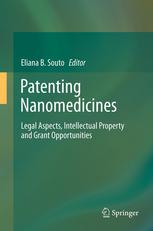

Most ebook files are in PDF format, so you can easily read them using various software such as Foxit Reader or directly on the Google Chrome browser.
Some ebook files are released by publishers in other formats such as .awz, .mobi, .epub, .fb2, etc. You may need to install specific software to read these formats on mobile/PC, such as Calibre.
Please read the tutorial at this link: https://ebookbell.com/faq
We offer FREE conversion to the popular formats you request; however, this may take some time. Therefore, right after payment, please email us, and we will try to provide the service as quickly as possible.
For some exceptional file formats or broken links (if any), please refrain from opening any disputes. Instead, email us first, and we will try to assist within a maximum of 6 hours.
EbookBell Team

4.7
86 reviews“Patenting Nanomedicines: Legal Aspects, Intellectual Property and Grant Opportunities” focusses on the fundamental aspects of Patenting Nanomedicines applied in different “Drug Delivery and Targeting Systems”. The promoters of new findings in this field of research are numerous and spread worldwide; therefore, managing intellectual property portfolios, and the acquisition and exploitation of new knowledge face several contingency factors. Today, the scientific community is discussing issues of economic outcomes in the field of Nanomedicines. Major concerns include questions as to whether the research groups, academics, industry and other stakeholders should work in unison or independently, if innovation or adaptation of new technology should be prioritized, public versus private research funding, and safeguarding versus sharing knowledge. However, despite its increasing importance for humankind, it is a matter of concern as to whether technological development can really be stimulated by patent protection. An intellectual property strategy should aim to develop a qualitative patent portfolio for continuous learning.
This book addresses questions of ethics, socio-political policies and regulatory aspects of novel Nanomedicine-based products which are currently under development for the diagnosis and treatment of different types of diseases. It is divided in two parts – Part I is composed of the first 3 chapters, which focus on the “fundamentals” of legal aspects, emerging threats, advantages and disadvantages of patenting Nanomedicines, whereas Part II collects 12 chapters discussing different types of Nanomedicine-based products, their potential marketing aspects and patent protection. Whenever applied, each chapter offers a list of patents, based on a specific application in drug delivery and targeting. An outstanding team of 53 authors have contributed to this book, which will be of interest to professionals from the field of patent examiners, academics, researchers and scientists, students and other practitioners.